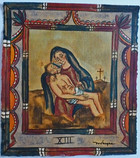Station XIII: Christ is Taken Down from the Cross.
A voice was heard in Ramah, lamentation, and bitter weeping; Rahel weeping for her children refused to be comforted for her children, because they were not.
(Jeremiah 31:15)
After hanging on the Cross for six hours, Christ has forced out his last painful breath and died. Our attention shifts to those keeping watch at Golgotha. There is the Centurion in charge of the detachment of Roman soldiers who have carried out the execution. Terrified by an earthquake and other natural wonders, accompanying Jesus’ death, he makes what amounts to a confession of faith: “Truly this was the Son of God (Matthew 27:54).”
We know from John 19:26 the “Disciple, whom Jesus loved,” usually assumed to be John the Evangelist, was also standing by the Cross. As evening draws on two other men creep out of the shadows, Joseph of Arimathea and Nicodemus, the Pharisee mentioned in John 3 who first came to Jesus by night. Both are members of the Sanhedrin, the governing Jewish council, and opposed the verdict against Christ. They help, now, in taking the body down from the Cross.
This is how history has been recorded throughout much of human civilization, but anyone with the vaguest knowledge of what happened on Good Friday will immediately recognize one glaring omission. Where are all the women? One of the most striking features of the New Testament narratives is the key role women play in the Passion Story--all the more extraordinary, when you consider the testimony of women did not carry much weight in the ancient world.
With the exception of the Beloved Disciple, the other ten apostles are nowhere to be seen at Golgotha. But there were other followers of Christ ready to go with him to Golgotha that day, a group of women--whom the Evangelist Mark describes as “looking on afar off”--and not the lamenting ladies of the city, either! They are the women, the Evangelist tells us in Mark 15:15, “who, also, when he was in Galilee, followed him, and ministered unto him; and many other women which came up with him unto Jerusalem.” You might call them The Overlooked Disciples.
Some of these women even stood under the Cross. The Evangelist John tells us “the Mother of Jesus” was there by her son, who cared enough for Mary to entrust her before dying to the Beloved Disciple. Mary Magdalene was at Golgotha. There was also a third Mary, “the wife of Clopas,” who was Jesus’ aunt. The Evangelist Matthew mentions the “the mother of Zebedee’s children” (the Apostles James and John) among the women present at the Place of the Skull. She may or may not be the “Salome,” referred to in the parallel Crucifixion story in the Gospel of Mark.
Various combinations of these women reappear in the Easter Sunday narratives with the addition of “Joanna,” who is, most likely, the woman, mentioned earlier in the Gospels, as a key supporter of Jesus, married to an official in Herod’s court. Sorting out who all the Marys are can get very confusing, but the Bible leaves us in no doubt who first heard the good news of the Resurrection. Christ’s faithful female followers!
One variation of scenes of the descent from the Cross found special favor among the faithful down the ages--the Pieta (the Italian word for pity), showing Mary, grieving over the corpse of her dead son. You would have to have a heart of stone not to be moved by these depictions of the distraught Mary, cradling the bruised and broken body of Jesus in her arms, perhaps, wondering why he escaped the Slaughter of the Innocents as a baby to come to such a brutal end in early manhood.
She is the archetypal maternal image--a study of wounded, compassionate love, facing down the unspeakable horrors of history. This portrait in pathos has special resonance for us today, when we grow indifferent so quickly to the innocent victims of war, rape, abuse, and degradation, who appear for fleeting moments on TV screens before our attention is drawn to the next news sensation.
Give me the compassionate heart of a mother that will never grow uncaring or calloused to the needs of a broken and suffering world. Amen.

Marianna Wisnios

Oluwaseyi Alade
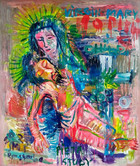
Martinus Sumbaji
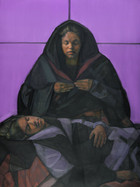
Janet McKenzie
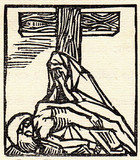
Jean Marchand
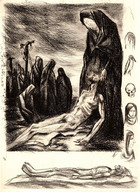
Andre Collot
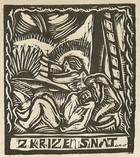
Unknown Czech artist
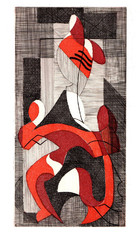
Elisabeth de la Mauviniere
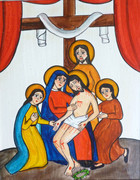
Marie Romero Cash
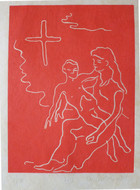
Adrian Wiszniewski
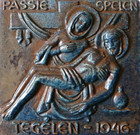
Unknown Dutch Artist
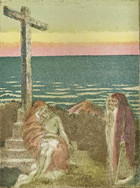
Maurice Denis
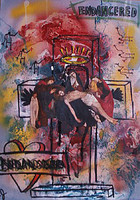
E.J. Artist

Unknown Spanish Artist
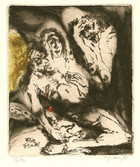
Jaroslav Dajc

Wiktoria Gorynska
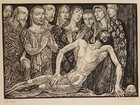
Louis Jou
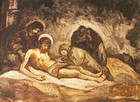
Eugene Higgins
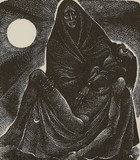
Fritz Eichenberg
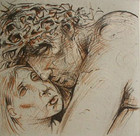
Peter Howson

Gwen Raverat
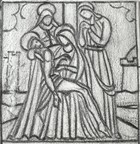
Arthur Kemp

Milan Entler
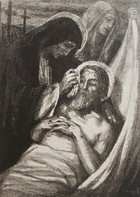
Raphael Drouart
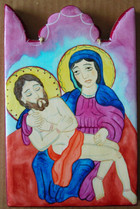
Frank Garcia
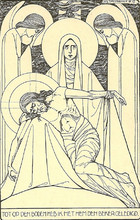
Jos Speybrouck
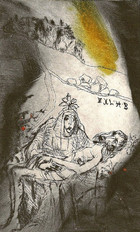
Jaroslav Dajc
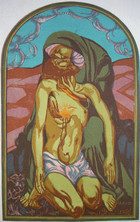
Maurice Denis
